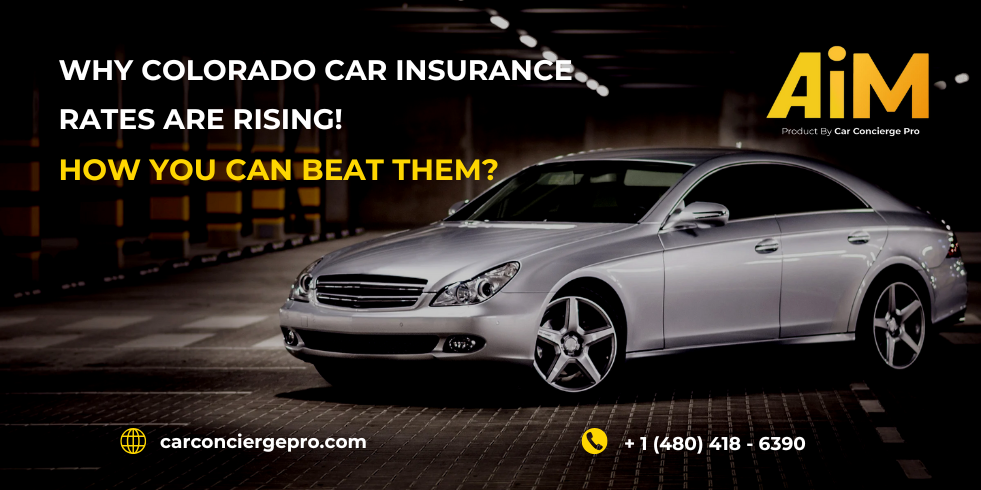Navigating the world of insurance as a young adult can be overwhelming. Between understanding coverage options, managing premiums, and balancing a budget, making the right decisions is crucial. This guide provides a comprehensive roadmap to help you make wise insurance choices, ensuring you’re both protected and saving money. Whether you’re a new driver or a seasoned one, these insights will help you take charge of your car insurance decisions.
As young adults navigate the transition to financial independence, making smart insurance choices becomes critical, especially when it comes to driving. Statistics reveal that drivers aged 18-24 are involved in 20% of all traffic accidents, despite comprising only 12% of licensed drivers, making car insurance a top priority. According to the National Highway Traffic Safety Administration (NHTSA), the average cost of a car accident in the U.S. is $23,450, emphasizing the financial risk of being uninsured or underinsured. Moreover, 2023 data from the Insurance Information Institute indicates that the national average for annual car insurance premiums is $1,682, but this cost can vary significantly based on factors such as location, driving record, and vehicle type.
For instance, young drivers with a clean record can save up to 20% on premiums by choosing usage-based insurance programs, which utilize telematics to reward safe driving habits. Additionally, bundling car insurance with renters or health insurance can yield savings of up to 15%, reducing overall costs while enhancing coverage. Despite these options, research shows that 29% of young adults forego car insurance due to financial constraints, risking penalties that can exceed $1,000 in fines in states with mandatory coverage laws, not to mention potential license suspension. To address affordability, many insurers offer discounts for good grades (typically a GPA of 3.0 or higher), which can lower premiums by 7-10%, and taking defensive driving courses can provide an additional 5% discount.
Furthermore, opting for higher deductibles can reduce monthly payments by 10-15%, though this requires careful consideration of one’s ability to cover out-of-pocket costs in the event of a claim. It’s also worth noting that new technologies, such as AI-driven claims processing, have streamlined the insurance experience, with 80% of claims now being resolved within days, compared to weeks in the past, according to a 2023 Deloitte report. For young adults, understanding policy details, including liability limits, collision, and comprehensive coverage, is vital, as these determine the level of protection in scenarios ranging from fender-benders to natural disasters. For example, the average cost of repairing a vehicle after a minor collision is $3,000, which liability-only policies won’t cover, making comprehensive plans a wise investment.
In conclusion, by leveraging discounts, embracing technology, and tailoring coverage to individual needs, young adults can drive with confidence and financial security. Prioritizing smart insurance choices not only safeguards against unexpected costs but also establishes a foundation of responsible financial management that pays dividends for years to come.
Table of Contents
Why Car Insurance is Crucial for Young Adults
Car insurance is not just a legal requirement; it’s a financial safety net. According to the National Highway Traffic Safety Administration (NHTSA), young drivers aged 16–24 are involved in 36% more accidents than older drivers. The right car insurance can save you thousands of dollars in repairs, medical bills, and legal fees.
For many young adults, driving a car symbolizes their newfound freedom and independence. However, the reality of car ownership goes beyond the thrill of the open road. It comes with a set of responsibilities, and one of the most critical is car insurance.
Driving without car insurance is illegal in most jurisdictions. Penalties can include hefty fines, license suspension, or even jail time. Without insurance, you would be responsible for all accident-related costs, potentially leading to financial ruin. The fines and penalties for driving without insurance can be significant, adding to your financial burden. Losing your driver’s license can severely impact your mobility and ability to get to work or school. The financial consequences of an accident can be devastating. Repairing your vehicle or another driver’s vehicle after an accident can be expensive. Injuries sustained in an accident can lead to substantial medical bills, even with health insurance. If you’re found at fault, you could face legal fees and even potential lawsuits.
In conclusion, car insurance is not just a legal requirement; it’s a financial safeguard for young drivers. By understanding the risks and choosing the right coverage, you can protect yourself and your finances while enjoying the freedom of the road.
Key Benefits of Car Insurance:
- Financial Security: Covers damage to your vehicle and liabilities.
- Peace of Mind: Protects against unforeseen accidents.
- Legal Compliance: Most states mandate liability insurance.
Understanding the Basics: Coverage Types
Young adults often underestimate the importance of choosing the right coverage. Here’s a breakdown of essential car insurance types:
Understanding the Basics: Coverage Types
For young adults stepping into the world of car insurance, understanding coverage types is critical to making informed decisions. Often underestimated, choosing the right coverage can protect against significant financial loss. Below is a comprehensive breakdown of essential car insurance types, their costs, and why they matter.
- Liability Insurance Liability insurance is the foundation of car insurance and is legally required in most states. It covers the cost of damages to other people or property if you cause an accident. According to the Insurance Information Institute (2023), the average annual premium for liability insurance is $611. However, it’s worth noting that minimum state requirements may not cover all costs in severe accidents; opting for higher limits is a safer choice. For instance, the average cost of a liability claim in 2023 was $22,734 for bodily injury and $4,850 for property damage, showing that state minimums often fall short.
Covers damage to other people or property in accidents you cause. It’s legally required in most states.
- Cost: Average annual premium: $611 (Insurance Information Institute, 2023).
- Tip: Opt for higher limits to ensure complete protection.
- Collision Insurance Collision insurance covers damages to your car regardless of who is at fault. This type of insurance is essential for young drivers with new or financed vehicles. Adding collision coverage increases the premium by approximately $290 annually, but it’s a worthwhile investment considering the high cost of repairs. The average repair cost after a collision is $3,000, according to AAA. This coverage ensures that drivers aren’t left financially stranded after an accident.
Pays for damages to your car, regardless of fault.
- Cost: Adds about $290 annually.
- Ideal for: Young drivers with new or financed cars.
- Comprehensive Insurance Comprehensive insurance protects against non-collision-related damages, such as theft, vandalism, or natural disasters. In 2023, the average cost for comprehensive coverage was $134 annually. This is particularly crucial for those living in areas prone to extreme weather conditions or high theft rates. For example, the National Insurance Crime Bureau reported over 1 million vehicle thefts in 2022, highlighting the importance of this coverage.
Covers non-collision-related damages (theft, vandalism, weather).
- Cost: Average cost: $134 annually.
- Tip: Essential for areas prone to extreme weather or high theft rates.
- Uninsured/Underinsured Motorist Coverage With approximately 1 in 8 drivers in the U.S. being uninsured, according to the Insurance Research Council, uninsured/underinsured motorist coverage is vital. This coverage protects you if you’re hit by someone who lacks adequate insurance. The average claim involving uninsured motorists is $20,000, demonstrating the financial risk of going without this protection. In some states, this coverage is mandatory, while in others, it’s a prudent add-on.
Protects you if you’re hit by someone without adequate insurance.
- Fact: 1 in 8 drivers in the U.S. is uninsured.
- Personal Injury Protection (PIP) PIP, also known as no-fault insurance, covers medical expenses and lost wages regardless of who is at fault. In states where PIP is required, the average annual premium is $150. This coverage can be a lifesaver, as the average cost of an emergency room visit after an accident is $3,300, according to the CDC.
- Gap Insurance For young drivers financing a car, gap insurance covers the difference between the vehicle’s actual cash value and the remaining loan balance if the car is totaled. The cost of gap insurance is typically $20-$40 annually when added to an auto policy. Given that new cars depreciate by 20% in the first year, this coverage is essential for financial protection.
Cost-Saving Tips for Young Drivers While comprehensive coverage is important, young drivers can manage costs effectively. Bundling policies can save up to 15%, and maintaining a GPA of 3.0 or higher can reduce premiums by 10-15%. Usage-based insurance programs that monitor driving habits through telematics offer discounts of up to 20%. Additionally, choosing higher deductibles can lower monthly premiums by 10-15%, though drivers must ensure they can cover out-of-pocket expenses when needed.
Cost-Saving Strategies for Young Drivers
Young drivers often struggle with high insurance costs, but implementing cost-saving strategies can make a significant difference while ensuring adequate coverage. According to a 2023 report from the Insurance Information Institute, the average annual premium for drivers under 25 is $2,000, but young drivers can save up to 30% by comparing quotes across multiple providers. Usage-based insurance (UBI) programs, which track driving behavior through telematics, offer discounts of up to 20% for safe driving habits, making them an excellent option for young drivers.
Maintaining a good academic record can also lower premiums, with insurers typically providing discounts of 10-15% for students achieving a GPA of 3.0 or higher. Bundling policies, such as combining auto insurance with renters or health insurance, can yield additional savings of 15% on average.
Defensive driving courses, often costing around $100, can provide a return on investment through a 5% premium discount and improved driving skills. Another strategy is choosing a higher deductible, which can reduce monthly premiums by 10-15%, though this requires careful budgeting to ensure affordability in the event of a claim. Research from AAA highlights that young drivers who maintain their vehicles properly—through regular oil changes, tire rotations, and brake inspections—can reduce accident risks and avoid costly repairs, with the average cost of a breakdown being $600. Additionally, driving a less expensive or used car can lower insurance rates, as insuring a new vehicle typically costs 20-30% more. Young drivers should also avoid lapses in coverage, as a gap of even one month can increase premiums by up to 8%.
According to the National Association of Insurance Commissioners (NAIC), joining a parent’s policy can save young drivers 25% compared to purchasing individual coverage. Beyond these strategies, understanding policy details, such as liability limits and comprehensive coverage, ensures that young drivers are protected against unexpected expenses, with liability-only policies often leaving drivers vulnerable to repair costs averaging $3,500 after minor accidents.
Parents play a crucial role in guiding young drivers, as studies indicate that parental involvement reduces risky driving behavior by 50%. In conclusion, by leveraging discounts, embracing technology, and practicing responsible financial and driving habits, young drivers can significantly reduce their insurance costs while ensuring comprehensive protection on the road. These strategies not only save money but also promote safe driving practices, setting young adults on a path toward long-term financial and personal responsibility.
Insurance premiums for young adults are often higher due to increased risk factors. However, there are practical ways to save:
1. Compare Quotes
Shopping around can save up to 25% on premiums. Platforms like Car Concierge Pro simplify this process by finding you the best deals.
2. Bundle Policies
Combine auto and renter’s insurance to save up to 15%.
3. Opt for Higher Deductibles
A higher deductible lowers premiums. For instance:
- $1,000 deductible vs. $500 saves 15-20% annually.
4. Maintain a Clean Driving Record
Avoid speeding tickets and accidents. A clean record can reduce costs by up to 30%.
5. Leverage Discounts
Many insurers offer discounts for:
- Good grades: Save 10-15% if you’re a student with a GPA of 3.0 or higher.
- Safe driving courses: Certification can save an additional 5-10%.
Emerging Trends in Car Insurance for Young Adults
Emerging Trends in Car Insurance for Young Adults
For young adults, staying informed about emerging trends in car insurance can lead to significant cost savings and enhanced protection. Two notable advancements are telematics-based insurance and AI-powered services, which are reshaping the industry by leveraging technology and data to offer tailored solutions.
Telematics-Based Insurance Telematics-based insurance, often referred to as usage-based insurance (UBI), tracks driving behavior using devices or smartphone apps. These programs reward safe driving habits with lower premiums, making them particularly appealing to cautious young drivers. According to a 2023 report from the National Association of Insurance Commissioners (NAIC), drivers enrolled in telematics programs save an average of 10-30% on their premiums. For instance, a young driver paying an annual premium of $2,000 could save up to $600 by demonstrating safe driving practices, such as maintaining consistent speeds and avoiding sudden braking. Additionally, the popularity of telematics is growing rapidly, with nearly 40% of insurers offering such programs as of 2023. These policies also provide real-time feedback, helping drivers improve their habits and further reduce risks on the road.
AI-Powered Services Artificial intelligence is revolutionizing the car insurance landscape by streamlining processes and personalizing coverage. AI-powered platforms, such as AiM Services, analyze vast amounts of data—including driving habits, claim history, and even weather patterns—to recommend optimal coverage levels. This ensures that young drivers receive protection tailored to their unique needs at the lowest possible cost. A 2023 Deloitte study highlighted that AI-driven claims processing reduces resolution times by up to 70%, with 80% of claims being settled within a few days. Additionally, predictive analytics powered by AI can identify potential risks and suggest proactive measures, such as enrolling in defensive driving courses, which can lower premiums by 5-10%.
The Benefits for Young Adults The integration of telematics and AI into car insurance not only offers cost savings but also enhances safety and convenience. For example, drivers who adopt telematics programs report fewer accidents, with a 20% reduction in collision rates, according to a 2023 study by the Insurance Research Council. Furthermore, the ability to customize policies through AI-driven insights ensures that young drivers avoid overpaying for unnecessary coverage. These advancements also address affordability concerns, with telematics and AI-based policies reducing overall costs by an average of 15%, making insurance more accessible to young adults who might otherwise forego coverage.
Mistakes Young Drivers Should Avoid
Young drivers often face unique challenges when navigating the roads, and avoiding common mistakes can significantly reduce risks and costs. Data from the National Highway Traffic Safety Administration (NHTSA) reveals that drivers aged 16-20 are involved in 17% of fatal crashes annually, despite representing just 7% of licensed drivers, highlighting the importance of safe driving practices. One of the most significant errors is driving without insurance, which 13% of young drivers admit to, according to a 2023 study by the Insurance Research Council. This not only violates the law in most states but can also result in fines exceeding $1,000, license suspension, and even vehicle impoundment.
Another critical mistake is neglecting to compare insurance quotes—research shows that young drivers who shop around can save up to 30% annually on premiums, with the average national cost of car insurance for drivers under 25 being $2,000 per year. Speeding is another prevalent issue, as the Insurance Institute for Highway Safety (IIHS) reports that 40% of fatal crashes involving young drivers are speed-related. Additionally, distracted driving, such as texting or using a phone, contributes to 25% of crashes among drivers under 21, resulting in over 2,800 fatalities annually, according to the Centers for Disease Control and Prevention (CDC). Failing to take advantage of discounts is another missed opportunity; for instance, maintaining a GPA of 3.0 or higher can reduce premiums by 10-15%, while completing a defensive driving course can yield a 5% discount.
Young drivers should also avoid underinsuring their vehicles, as liability-only policies won’t cover damages to their own cars, leaving them vulnerable to repair costs averaging $3,500 after a minor accident. Moreover, skipping routine vehicle maintenance, such as tire checks and oil changes, increases the likelihood of breakdowns or accidents, with AAA estimating that poorly maintained vehicles cause 5% of crashes each year. To mitigate risks, young drivers are encouraged to embrace technology, such as usage-based insurance programs that monitor driving habits and offer savings of up to 20% for safe driving.
Parents also play a crucial role, as studies show that young drivers with involved parents are 50% less likely to engage in risky behaviors. In conclusion, by addressing these common mistakes, such as driving uninsured, ignoring discounts, speeding, and neglecting vehicle maintenance, young drivers can enhance their safety on the road while managing costs effectively. These proactive measures not only prevent costly errors but also lay the groundwork for responsible driving habits that benefit them throughout their lives.
- Choosing Minimum Coverage
While minimum liability insurance meets legal requirements, it may not cover major expenses after an accident. - Ignoring Policy Add-Ons
Extras like roadside assistance or gap insurance can save significant money during emergencies. - Not Reviewing Policies Annually
Car insurance needs evolve. Regular reviews can identify better coverage options or discounts.
Skipping Professional Assistance
Services like Car Concierge Pro can help young drivers find tailored policies without the hassle of endless research.
Take Charge of Your Car Insurance Today
Making smart insurance choices requires knowledge, planning, and leveraging available tools. Protecting yourself and your vehicle as a young adult doesn’t have to be expensive. Utilize services like Car Concierge Pro and AiM Services to simplify the process, find competitive rates, and enjoy peace of mind on the road.



